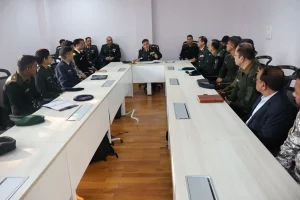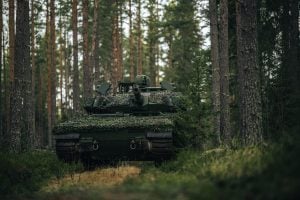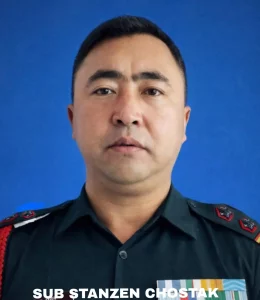Indian troops take vantage positions along LAC in Ladakh
- With trust levels at an all-time low, India is not taking any chances along the Line of Actual Control (LAC) in eastern Ladakh, with troops moving to vantage positions all along the border to detect and deter ingress moves by China. Talks at the brigade commander-level continued for the third successive day but sources said that no headway was made, with the Indian position clear that troops posted in the Chushul sub-sector were moved in response to aggressive Chinese movements and will not be withdrawn.
- While recent news has reported that Indian forces have taken positions at strategic heights of Chushul, including Rezang La, Rechin La and near Black Top, to take control of the southern bank of the Pangong Tso, sources said similar moves have been made all along the LAC in eastern Ladakh. “Troops have taken up vantage points in all key areas from Daulat Beg Oldie (in the north) to Chumar (in the south). These deployments are within our side of the border and have been undertaken to keep a check on any movements from the other side,” sources said.
- Heavy troop deployments continue along both banks of the Pangong Tso, which is a hotspot for tensions since the Chinese side moved in troops to occupy a large tract of land in the Finger Area, located on the northern shore. Deployments in Chushul have given India control over the southern shore but China remains firmly in possession of an area extending from Finger 4 to Finger 8 in the north. Officials said precautionary deployments have been made in the Finger Area as well but there is no eyeball-to-eyeball confrontation as of now. “As part of the precautionary deployment carried out on August 30, 2020, some readjustments of our positions on North Bank of Pangong Tso on our side of LAC had also been carried out,” officials said.
- Tensions in Eastern Ladakh are on a razor’s edge, with Indian troops at their highest level of alertness to thwart any further attempts by the Chinese to move in troops at new locations to create more flashpoints. Special attention is being focused on vulnerable areas like the Depsang plains, the Demchok sector and Chushul where Chinese troops have violated the LAC in the past as well.
Raksha Mantri Shri Rajnath Singh discusses issues of defence cooperation between India and Russia with Russian Defence Minister General Sergei Shoigu in Moscow
- Raksha Mantri, Shri Rajnath Singh, accompanied by delegation including Defence Secretary and other senior officials is visiting Moscow to participate in the 75th Anniversary Event to commemorate Victory Day by the Russian Federation in the meeting of Defence Ministers of Shanghai Cooperation Organisation (SCO), Collective Security Treaty Organisation (CSTO) and Commonwealth of Independent States (CIS) countries.
- Yesterday, Raksha Mantri had a one-hour meeting with Russian Defence Minister, Gen. Sergei Shoigu, at the Russian Ministry of Defence. The meeting was marked by the traditional warmth and friendship, characteristic of the Special & Privileged Partnership between India and the Russian Federation in which Military Technical Cooperation and Military-to-Military cooperation constitutes an important pillar.
- Defence Minister General Shoigu conveyed his warm appreciation to Raksha Mantri for his participation in the 75th Anniversary of Victory Day Parade at Red Square on 24 June 2020, and his participation in the joint meeting of the SCO, CIS & CSTO countries. His meeting with RM was the first meeting he was having with visiting Defence Ministers.
- The meeting covered a broad range of areas of cooperation between the two countries. It was noted that this meeting coincides with the Indra Naval Exercises to be conducted by the Indian and Russia navies off the Straits of Malacca over the next two days. Raksha Mantri noted that these exercises demonstrated the common interests of both countries in maritime security in the Indian Ocean Region. There was substantial commonality in positions with respect to challenges at the regional and international levels in the areas of peace and security, reflective of the deep trust and confidence that both sides enjoy as Strategic Partners.
- Raksha Mantri conveyed appreciation for the steadfast support provided by Russia consistent with the defence and security needs of India, and in this context, particularly noted the timely manner in which the Russian had responded to requests for procurement of particular weapon systems. Both sides would continue to maintain contacts to ensure the timely delivery.
- Raksha Mantri briefed General Shoigu on the ‘Make-in-India’ defence programme in the context of Prime Minister Narendra Modi’s Aatma Nirbhar Bharat vision. Both sides welcomed the advance stage of discussions for the establishment in India of an India-Russian Joint Venture for the production of AK203 assault rifles which are considered one of the most modern weapons available for infantry forces. This provides very positive basis for further engagement of Russian defence industry in ‘Make in India’ programme. General Shoigu reiterated commitment of the Russian side to engage actively with our MOD to ensure the success of ‘Make in India’ programme including substantial participation in the forthcoming Aero India Exhibition to be held in February next year.
- Raksha Mantri extended an invitation for General Shoigu to visit India for the next meeting of the Inter-Governmental Commission for Technical & Military Cooperation which is expected to be held towards the end of this year.
India secures its east after western Himalayan clashes with China
- India has moved troops to its eastern stretch of border with China since clashes erupted between the nuclear-armed rivals on the western part of their border in the Himalayas in June, a government official said.
- The June clash in the Ladakh region, in the western part of their border, was the worst violence between the Asian giants in decades and there has been little sign of a reduction in tension, with more military action in the past week.
- The movement of troops to the eastern district of Anjaw, in Arunachal Pradesh state, which China also claims, raises the prospect of a wider face-off though both government and military officials in India ruled out any imminent confrontation.
- “The military presence has surely increased, but as far as incursions are concerned, there are no verified reports as such,” said Ayushi Sudan, Anjaw’s chief civil servant, adding that several Indian army battalions were stationed there.
- “There has been an increase in troop deployment since the Galwan incident, and even prior to that we’d started,” she told Reuters by telephone, referring to the June clash in which 20 Indian soldiers were killed.
- Arunachal Pradesh, which China calls South Tibet, was at the centre of a full-scale border war between India and China in 1962, and security analysts have warned that it could become a flash-point again.
- But an Indian military spokesman, Lieutenant Colonel Harsh Wardhan Pande, said there was no cause for concern and the troops arriving in the area were part of regular rotation.
- “Basically, it’s units changing. That’s happening as it happens every time, nothing much,” Pande told a famous media group from near Guwahati, the largest city in north-eastern India, “As of now, there’s nothing to worry about on that front.”
- But Tapir Gao, a member of parliament from Arunachal, told media that Chinese troops had been regularly crossing into Indian territory.
- “It’s a regular phenomenon, it’s nothing new,” he said, identifying the Walong and Chaglagam areas in Anjaw as the most vulnerable.
- In the 1962 war, India says its outnumbered forces “blocked the thrust of the invading Chinese” in Walong, and the area of mountains, meadows and fast-flowing rivers is now a government focus for settlement and road-building.
- “What we’re trying to do is create more possibilities and opportunities for villagers,” said Sudan, referring to plans for clusters of villages in the disputed area. “It’s a push to resettle people.”
Air Chief Marshal RKS Bhadauria reviews IAF’s operational preparedness in eastern sector
- Chief of Air Staff Air Chief Marshal RKS Bhadauria reviewed the IAF’s operational preparedness along the Line of Actual Control (LAC) in Arunachal Pradesh and Sikkim in view of the escalating border tensions with China, officials said on Thursday.
- “Air Chief Marshal Bhadauria visited frontline air bases in Eastern Air Command (EAC) on Wednesday,” an IAF spokesperson said without mentioning the names of the air bases.
- The Eastern Air Command, headquartered in Shillong, looks after the aerial defence of sensitive areas along the LAC in Sikkim and Arunachal Pradesh as well as various other parts of the region.
- The Army and the Indian Air Force have increased their alert levels in all key bases along the nearly 3,400 km-long LAC following China’s fresh attempts to change the status quo in the Southern Bank of Pangong lake in eastern Ladakh.
- The IAF spokesperson said the Chief of Air Staff was apprised about the “state of readiness” and operational preparedness of the combat units under the command.
- “Air Chief Marshal Bhadauria also met and interacted with air warriors serving in these units during the course of his visit. He lauded the focussed efforts by the station personnel towards maintaining proficiency in all roles envisaged and urged them to continue performing their duty with due diligence,” the official said.
- The IAF Chief has been regularly visiting key air bases along the LAC since the border row broke out between Indian and Chinese troops in eastern Ladakh in early May.
- In June, Air Chief Marshal Bhadauria made a quiet visit to Ladakh and Srinagar air bases to review the IAF’s overall preparedness.
- In the last two months, the IAF deployed almost all its frontline fighter jets like Sukhoi 30 MKI, Jaguar and Mirage 2000 aircraft in the key frontier air bases in eastern Ladakh and elsewhere along the LAC.
- The IAF has also deployed Apache attack choppers as well as Chinook heavy-lift helicopters to transport troops to various forward locations in the region.
- On Monday, the Indian Army said the Chinese military carried out “provocative military movements” to “unilaterally” change the status quo on the southern bank of Pangong lake on the intervening night of August 29 and 30 but the attempt was thwarted by the Indian troops.
- External Affairs Ministry Spokesperson Anurag Srivastava on Tuesday said the Chinese People’s Liberation Army (PLA) was engaged in “provocative action” again a day earlier when the ground commanders of the two sides were holding talks to ease the situation.
Meet ‘Establishment 22’, the special force behind the secret operation at Pangong
- Saturday night’s operation on the south bank of Pangong Tso has brought into limelight the possible role of ‘Establishment 22’, a secret force also known as the Special Frontier Force (SFF) under the administrative control of the Cabinet secretariat and the PMO.
- Senior Army officials acknowledged the presence of an SFF unit in eastern Ladakh but its interaction with the Army is minimal.
- Raised towards the end of the 1962 war, SFF’s commandos are drawn from Tibetan refugees settled in India. They were initially trained by the Intelligence Bureau, RAW and CIA for covert operations behind enemy lines. In the first few decades after it was raised, the force was used to keep an eye on Chinese plans to deploy nuclear warheads.
- The SFF gained its nickname ‘Establishment 22’ after its founder chief Sujan Singh Uban, who commanded the 22nd Mountain Regiment in the British Indian Army during World War II in Europe. Headquartered in Chakrata (Uttarakhand), it comprises at least five battalions or about 5,000 commandos who are elite paratroopers trained in mountain warfare.
- No serving or retired Army officer would acknowledge the role of SFF in Saturday night’s operation, but they all acknowledge the presence of SFF battalions in Ladakh and other places along the frontier. Lt Gen Syed Ata Hasnain (retired), former GOC of 15 Corps, said, “I have had ‘Vikas’ units alongside me while serving in Ladakh. Seen them play volleyball in vests at 16,000 feet. Their natural affinity for the ground too is remarkably high, giving them a major advantage in operations.”
- Others were less forthcoming and spoke on the condition of anonymity. “We know about them… But their existence has been off the books. The few of us who get to serve with them are under oath,” a retired lieutenant general said.
- Lt Gen D S Hooda (retired), who headed the all-important Northern Command during the surgical strikes across the LoC, told TOI that it was time for India to give a strong message economically, diplomatically and, if required, militarily, given the stubborn position adopted by China. “The ball is now in China’s court,” he said, adding that the Indian military was in an extraordinarily strong position to take on any challenge.
India, Russia finalise AK-47 203 rifles deal
- India and Russia have finalised a major deal for manufacturing AK-47 203 rifles in India during defence minister Rajnath Singh’s ongoing visit here, the official Russian media reported on Thursday.
- The AK-47 203 is the latest and most advanced version of the AK-47 rifle, which will replace the Indian Small Arms System (INSAS) 5.56×45 mm assault rifle.
- The Indian Army has a requirement for around 770,000 AK-47 203 rifles, of which 100,000 will be imported and the rest will be manufactured in India, Russia’s state-run Sputnik news agency said.
- The rifles will be manufactured in India as part of the joint venture Indo-Russia Rifles Private Limited (IRRPL), established between the Ordnance Factory Board (OFB), the Kalashnikov Concern and Rosoboronexport — the Russian state agency for military exports, it said. There was no official confirmation from the Indian government on the finalisation of the deal.
- The OFB would own a majority stake of 50.5 per cent in IRRPL while the Kalashnikov Group would have a 42 per cent share. Russia’s state-owned export agency, Rosoboronexport, would own the remaining 7.5 per cent, the report said.
- The 7.62×39 mm Russian weapon will be produced at the Korwa Ordnance Factory in Uttar Pradesh, which was inaugurated by Prime Minister Narendra Modi last year, the report said.
- The cost of per rifle is expected to be around $1,100, including the cost of technology transfer and of setting up the manufacturing unit, according to the report.
- The INSAS, which is use since 1996, has developed some issues such as jamming and magazine cracking at higher altitudes in the Himalayas, the Sputnik report said.
S. Jaishankar to attend September 10 meeting of SCO foreign ministers in Russia
- External Affairs Minister S Jaishankar will travel to Moscow to attend a meeting of foreign ministers of the Shanghai Cooperation Organisation (SCO) on September 10, it was officially announced on Thursday. Defence Minister Rajnath Singh left for Moscow on Wednesday on a three-day visit to attend a meeting of SCO defence ministers.
- “The external affairs minister will be visiting Moscow to attend the SCO Council of Foreign Ministers’ meeting which is scheduled on September 10,” spokesperson in the Ministry of External Affairs Anurag Srivstava said at an online media briefing.
- Asked whether Jaishankar will meet his Chinese counterpart Wang Yi, Srivstava said, “Once his engagements are finalised, we will let you know.”
- The SCO meetings are taking place at a time when India and China, two of the bloc’s members, are engaged in a fierce border row in eastern Ladakh.
- The SCO, seen as a counterweight to NATO, has emerged as one of the largest transregional international organisations which accounts for almost 44 per cent of the world population stretching from the Arctic Ocean to the Indian Ocean and from the Pacific Ocean to the Baltic Sea.
- The aim of the SCO is to maintain peace, stability and security of the region. India became a member of SCO in 2017.
Pakistan’s efforts to designate 2 Indians as terrorists blocked at UNSC
- The United Nations Security Council (UNSC) has thwarted Pakistan’s attempt to politicize 1267 special procedure on terrorism by giving it a religious colour, Permanent Representative of India to the United Nations, TS Tirumurti said on Wednesday.
- Pakistan had initiated a move to list two Indians – Angara Appaji and Gobinda Patnaik – as designated terror operatives under the UNSC’s 1267 Committee for Counterterrorism Sanctions. The UNSC led by the US, UK, France, Germany and Belgium decided to block Pakistan’s move after Islamabad failed to produce evidence to back up its allegations.
- “Pakistan’s blatant attempt to politicize 1267 special procedure on terrorism by giving it a religious colour, has been thwarted by UN Security Council. We thank all those Council members who have blocked Pakistan’s designs,” TS Tirumurti tweeted.
- Earlier this year names of two other Indians- Ajoy Mistry and Venu Madhav Dongara – proffered by Pakistan were also blocked.
- The move by Pakistan was widely perceived as retaliation for India’s success last year in getting Jaish-e-Mohammed founder Masood Azhar listed as a global terrorist by the 1267 committee, which focuses on the designation of terrorists linked to al-Qaeda, Taliban and their affiliates.
- Pakistan has time and again sought to rake up what it claims is India’s alleged role in fomenting terrorism on its soil at various UN bodies in recent months, but without any takers for its allegations. It even made a false claim that its envoy to the UN had delivered a statement at a UN Security Council meet on terrorism, but this was later proved to be false.
Development of “Healthy Air”, a Herbal-based Immunity Boosting Room Freshener
- Defence Institute of Advanced Technology, a Deemed to be University, Pune has now developed herbal-based immunity boosting room freshener product named “Healthy Air” to contain the spread of COVID-19.
- The product Healthy Air has been developed by Dept of Metallurgical and Materials Engineering with various extracts of herbal oils like Neem, Neelgiri, Camphor, Daalcheeni, Tulsi, Lemon, Turmeric, Laung, Ajwain, Lavender, Elaichi, Turmeric, Natural Vetiveru, Raimuniya and Pine Oil. The product consists of a blended solution of the natural herbal oils, which instinctively acts as an immunity booster for the body, and exhibits Anti-cancerous, Anti-microbial, Anti-viral and Anti-fungal properties. It is herbal-based product is non-carcinogenic, non-toxic, non-mutagenic, and purifies the air, and makes it breathable.
- The product is also experimented in Aerodynamic state of the art Laser Based Visualisation Lab for understanding the flow profile, formation of primary aerosol particles, aerosol breakdown thresholds as a function of particle size, particle density etc. It resulted that formation of secondary particles are not noticed which result in poor dispersion of primary particles.
- The product has resulted to removing the toxic fumes, cleanses the air, and does not contain any synthetic solvent / surfactant in its formulation. Further, it possesses the stress and anxiety reducing capabilities upon breathing and helps in treating the respiratory illness. Considering the blend of herbal extracts, the developed product acts as a natural insecticide, with no toxicity for human body, and in addition acts as a room freshener.
- Healthy Air does not contain any synthetic chemicals nor secondary solvents. Whereas the commercial room fresheners mostly contains synthetic adsorbents, surfactants, disinfectants, oxidizers, allergens, and chemical air sanitizers in the main formulation could affect respiratory system & brain neural sensing, do not contain any immunity boosting agents and does not possess the anti-bacterial properties.
- Healthy Air supports respiratory condition in healthy way, does not affect brain neural sensing and useful for people suffering from allergic reactions, breathing problems related to asthma, headache, nasal irritation, or soreness in throat as the product is mainly made of natural herbal extracts which works as immunity booster.
- The product can be used in any kind of rooms, conference halls, at public places, hospitals, malls, cinema halls, waiting lounges / rooms of Airports / Railway Stn etc. This product is packed in a container with wick also will be loaded in a dispenser.
- The technology transfer of this product freely available for Indian technology start-ups, and companies in its fight against the current pandemic situation.
REVIEW QUESTIONS
- Indian forces have taken positions at which strategic heights to take control of the southern bank of the Pangong Tso?
- Chushul
- Rezang La
- Rechin La
- All the above
ANSWER: D
- Headquarters of Collective Security Treaty Organization
- Kaliningrad
- Saint Petersburg
- Moscow
- Volgograd
ANSWER: C
- Official language of Collective Security Treaty Organization
- Serbian
- Russian
- English
- Turkish
ANSWER: B
- ‘Establishment 22’, a secret force, is also known as the
- Special Attack Force (SAF)
- Special Frontier Force (SFF)
- Frontier Fight Force (FFF)
- Special Protection Force (SPF)
ANSWER: B
- SFF comes under the administrative control of the
- Cabinet secretariat and PMO
- Cabinet Secretariat and Defence Minister
- Cabinet Secretariat and Home Minister
- Home Minister alone
ANSWER: A
- Consider the following statements regarding the manufacturing of AK-47 203 rifles in India:
- The rifles will be manufactured in India as part of the joint venture Indo-Russia Rifles Private Limited (IRRPL)
- IRRPL is established between the Ordnance Factory Board (OFB), the Kalashnikov Concern and Rosoboronexport.
- The OFB would own a majority stake of 50.5 per cent in IRRPL
Which of the above statements are correct?
- 1 and 2
- 2 and 3
- 1 and 3
- 1, 2 and 3
ANSWER: D

















